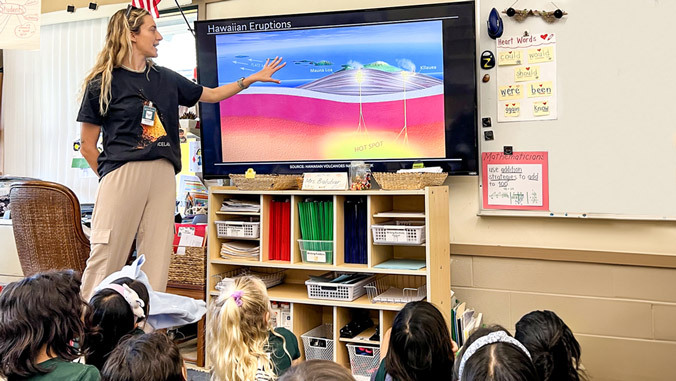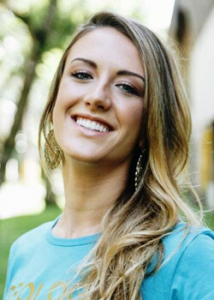
Throughout her academic career, Natalia Gauer Pasqualon has had a passion for understanding the dynamics of volcanic systems and their implications for hazard assessment and mitigation. As a graduate student at the University of Hawaiʻi at Mānoa School of Ocean and Earth Science and Technology (SOEST), she studies volcanic deposits and active eruptions, and develops methodologies that improve prediction and response to volcanic hazards.

“Science exists to solve problems within society, so it is a priority for me that our community is aware of what’s happening at the university,” said Pasqualon, who is pursuing her doctoral degree in the SOEST Department of Earth Sciences. “Engaging with community members demystifies the research process and makes science accessible to everyone.”
Pasqualon was selected for the semester-long SOEST outreach and communications trainee program, through which she shared her knowledge, curiosity and passion for volcanoes and Hawaiian geology with hundreds of students and community members. During the traineeship, she offered workshops, hands-on activities, and presentations at Oʻahu elementary and high schools, and the Waikīkī Aquarium’s Mauka to Makai community event.
“Making science enjoyable and relatable helps break down barriers and encourages learning,” Pasqualon said. “This transparency builds trust and allows the community to see the real-world applications of our work. And, by offering interesting activities and engaging with kids we spark their curiosity and enthusiasm for science, inspiring the next generation.”
Making science enjoyable and relatable helps break down barriers and encourages learning
Reciprocal learning
Pasqualon appreciates that learning and sharing goes two ways when interacting with students and community members.
“Building strong relationships with the community starts with these types of interactions,” she said. “Local knowledge and perspectives can provide valuable insights and incorporating community input into our research ensures that our work is relevant and beneficial to society.”
Another significant benefit, she said, is that she was invited to become more immersed in the local community.
“While waiting for other students to arrive at Nānākuli High School, I had a wonderful cultural exchange with one student,” Pasqualon shared. “They were preparing an ʻahu ʻula, a feathered cape traditionally worn by aliʻi royals and high chiefs, to welcome a teacher returning after a period away. I was amazed to learn from this local student about the ʻahu ʻula and how they put it together. It was definitely a highlight of my trainee experience.”
Funding for the SOEST Outreach and Communications Trainee program was provided by the National Science Foundation (NSF/GEO #2304691) through a Catalyst Award for Science Advancement.
–By Marcie Grabowski

